Tom's Hardware Verdict
An intelligent blend of high data rates with tight timings makes G.Skill's Trident Z Royal DDR4-4000 C17 memory kit a must-buy for performance seekers.
Pros
- +
Spectacular XMP performance
- +
Can run at C15 with finetuning
- +
Flashy looks
Cons
- -
Expensive price tag
Why you can trust Tom's Hardware
High-speed memory kits are often associated with sloppy timings: Once you surpass that DDR4-4000 mark, it requires a lot of resources to cherry-pick the best integrated circuits (ICs) that meet the requirements. G.Skill is one of a handful of memory vendors willing to invest time and resources into bringing high-speed memory kits that aren't held back by loose timings to the enthusiast market.
G.Skill offers a wide variety of DDR4-4000 memory kits with densities that start at 16GB (2x8GB) and go up to an awe-spiring 128GB (4x32GB). The CAS latency timings on these kits generally span from C15 up to C19. On this occasion, we'll take a look at a DDR4-4000 C17 memory kit that hails from G.Skill's exclusive Trident Z Royal family.
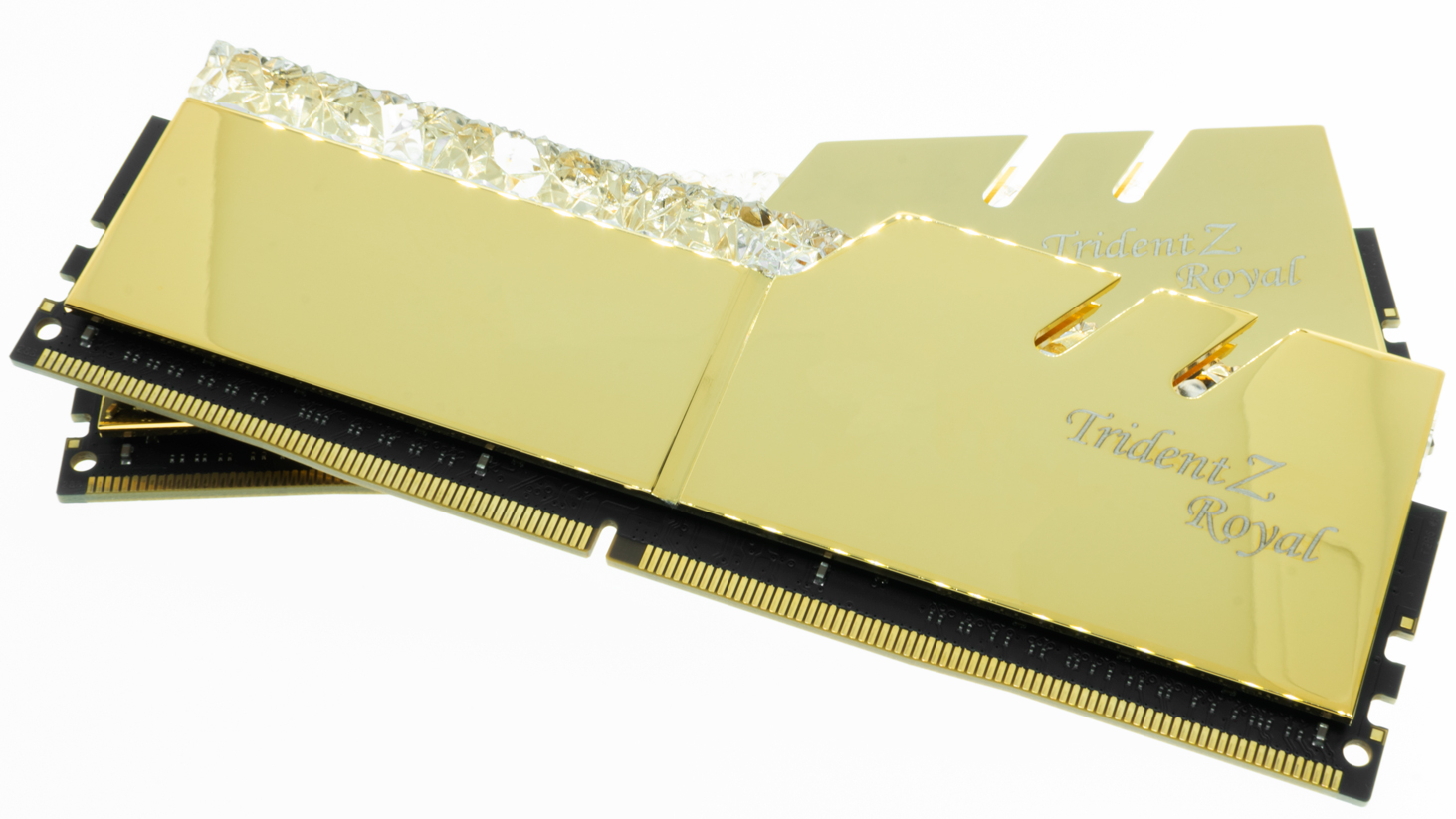


While the distinctive tri-fin design still remains, the Trident Z Royal looks more like a piece of jewelry than computer memory. The aluminum heat spreader, which features a gold or silver paint job, now comes with a beautiful mirror finish. It's a complete delight to look at for sure, but the shiny surface is a dust and fingerprint magnet. G.Skill was considerate enough to provide a small microfiber cloth for cleaning the memory modules, so you don't scratch the surface.
Despite the drastic makeover, the Trident Z Royal still measures 44mm (1.73 inches) tall. G.Skill replaced the boring light bar with one that flaunts a crystalline design. The eight-zone RGB lighting remains untouched. As usual, you have the option to control the Trident Z Royal's illumination with either the provided Trident Z Lighting Control software or through your motherboard's software, including Asus Aura Sync, Gigabyte RGB Fusion 2.0, MSI Mystic Light Sync, and ASRock Polychrome Sync.
There are no surprises here. Given that each memory module is 16GB, they feature a dual-rank configuration. G.Skill uses a custom 10-layer PCB in tandem with high-quality Samsung K4A8G085WB-BCPB (B-die) ICs to assure very tight timings.
When your system posts for the first time, you'll find the Trident Z Royal memory kit at DDR4-2133 with 15-15-15-36 timings. At this point, you can either set up the memory modules manually, or by enabling the XMP profile. In either case, the Trident Z Royal is certified to run at DDR4-4000 with a 1.4V DRAM voltage and 17-18-18-38 timings. For more on timings and frequency considerations, see our PC Memory 101 feature, as well as our How to Shop for RAM story.
Comparison Hardware
| Memory Kit | Part Number | Capacity | Data Rate | Primary Timings | Voltage | Warranty |
|---|---|---|---|---|---|---|
| G.Skill Trident Z Neo | F4-3600C16D-32GTZN | 2 x 16GB | DDR4-3600 (XMP) | 16-16-16-36 (2T) | 1.35 Volts | Lifetime |
| Crucial Ballistix Max RGB | BLM2K16G40C18U4BL | 2 x 16GB | DDR4-4000 (XMP) | 18-19-19-39 (2T) | 1.35 Volts | Lifetime |
| G.Skill Trident Z Royal | F4-4000C17D-32GTRGB | 2 x 16GB | DDR4-4000 (XMP) | 17-18-18-38 (2T) | 1.40 Volts | Lifetime |
| Klevv Bolt XR | KD4AGU880-36A180C | 2 x 16GB | DDR4-3600 (XMP) | 18-22-22-42 (2T) | 1.35 Volts | Lifetime |
Our Intel test system for RAM benchmarks consists of an Intel Core i7-10700K and Asus ROG Maximus XII Apex on the 0707 firmware. On the opposite end, the AMD testbed leverages an AMD Ryzen 5 3600 and ASRock B550 Taichi with the 1.30 firmware. The MSI GeForce RTX 2080 Ti Gaming Trio handles the graphical duties on both platforms.
Get Tom's Hardware's best news and in-depth reviews, straight to your inbox.
Intel Performance



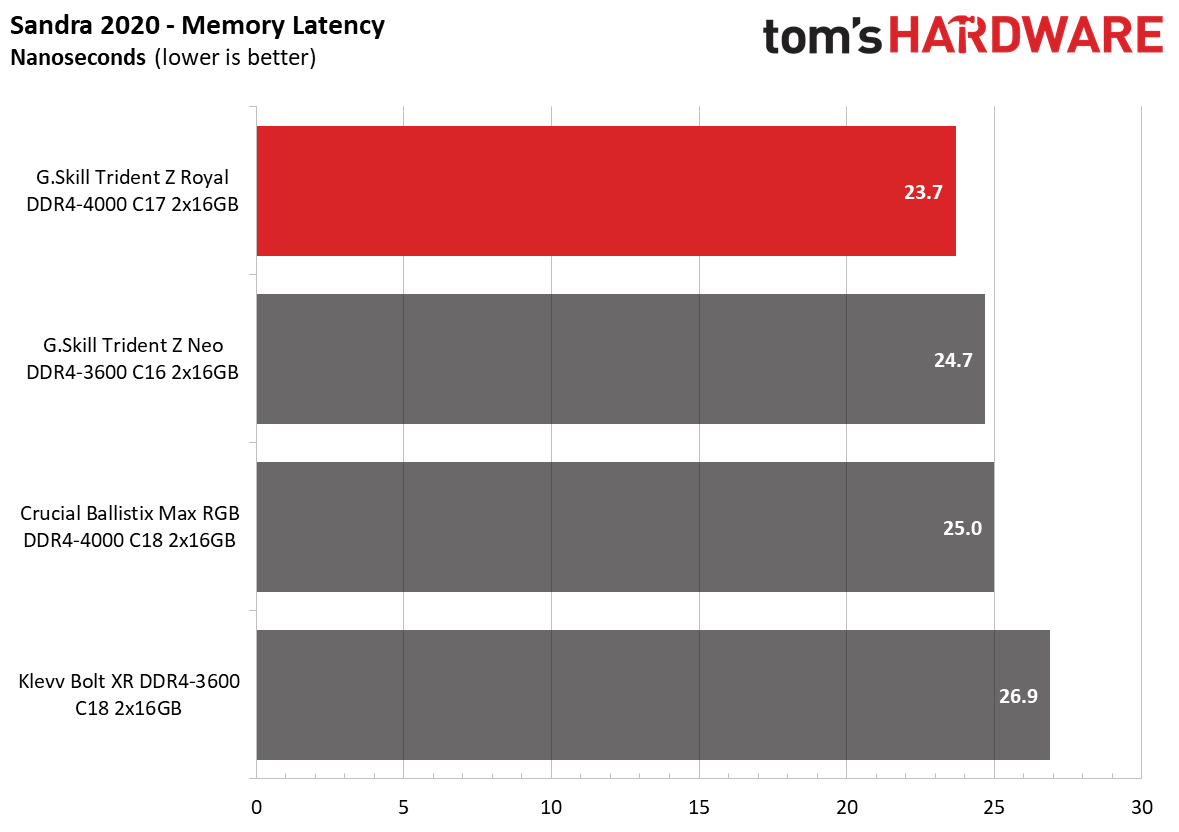






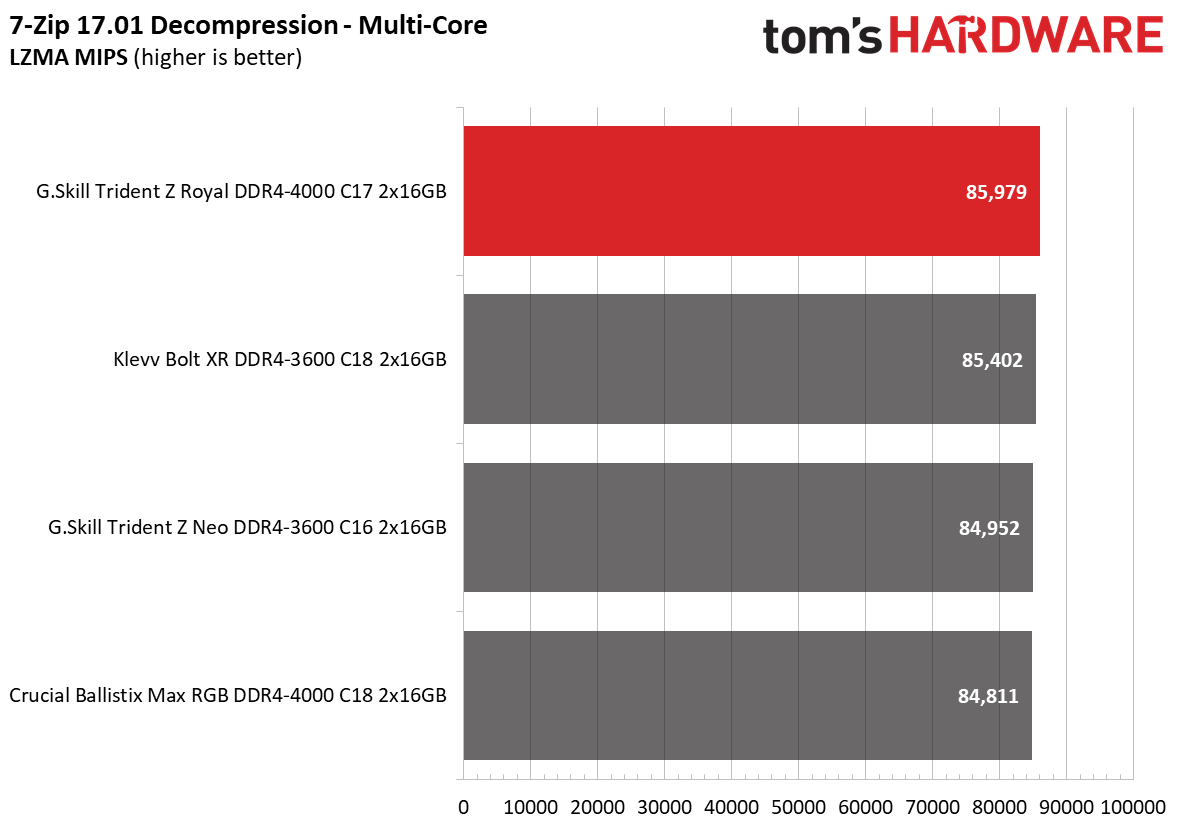
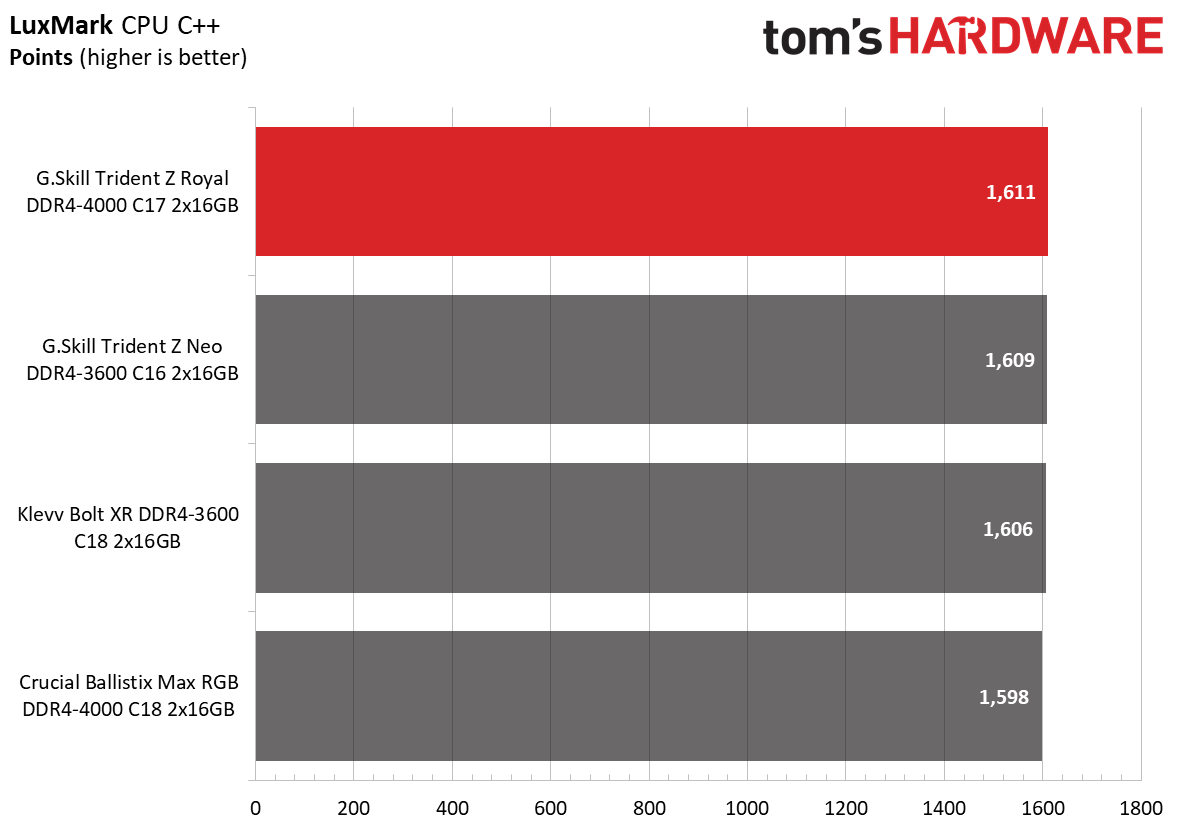
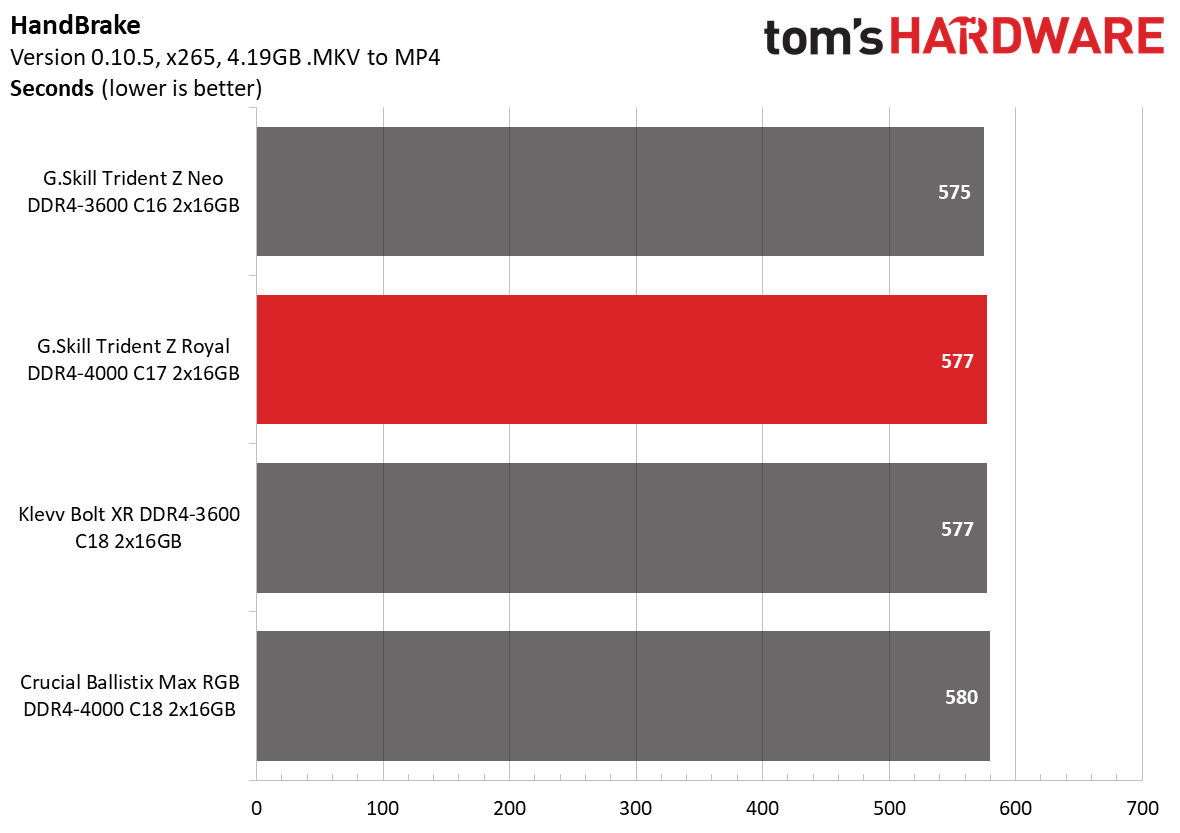

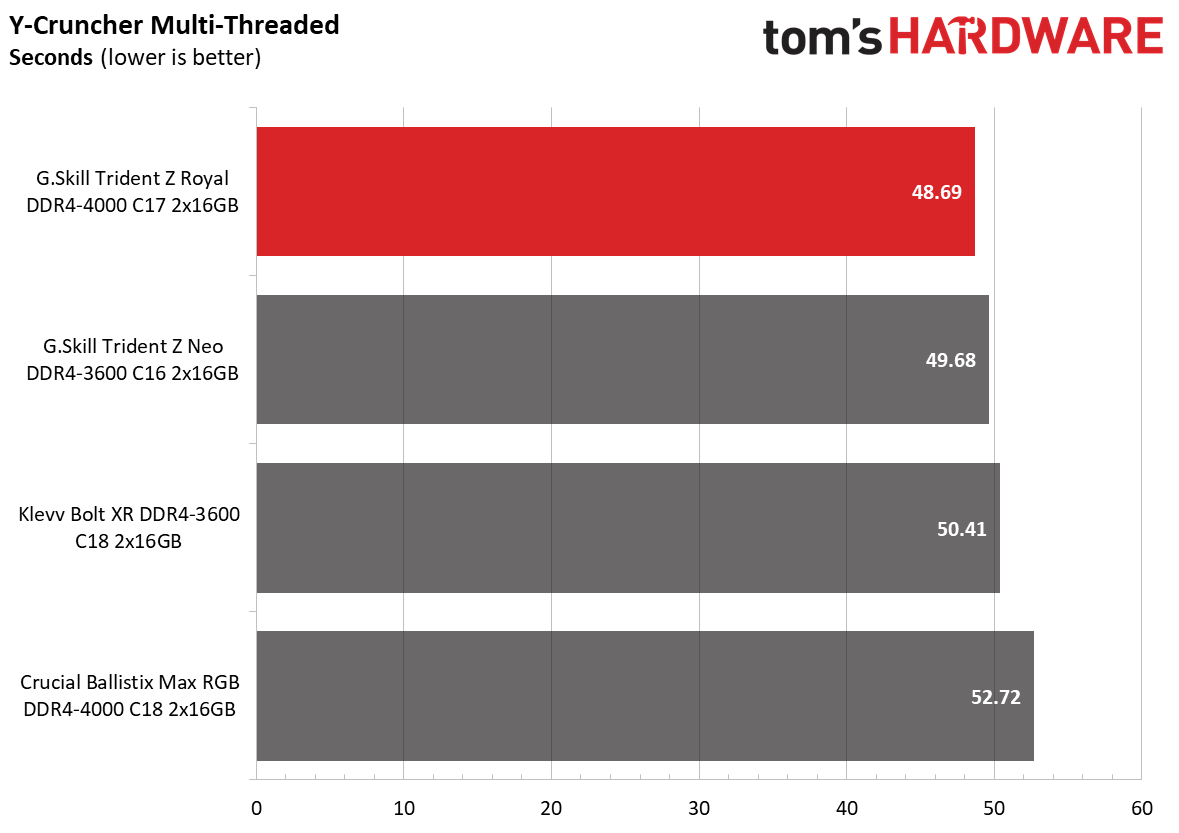



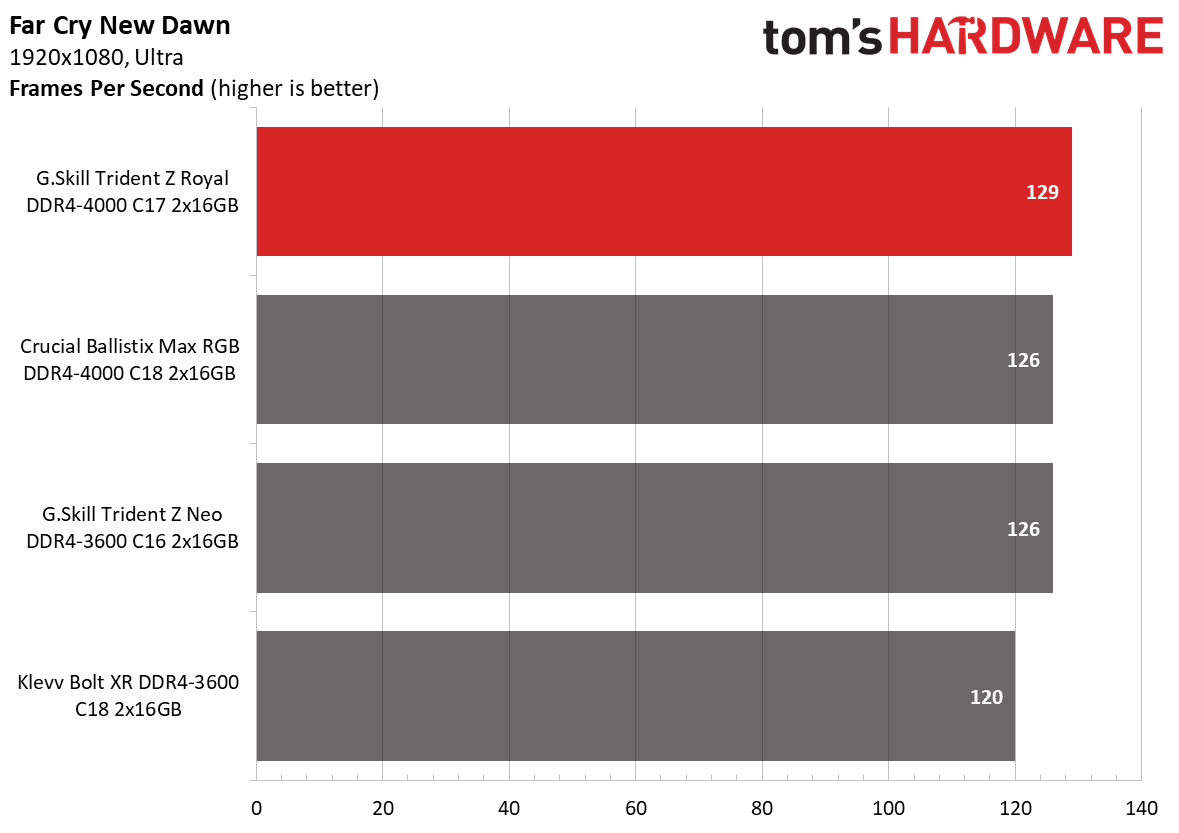
The Trident Z Royal was the best performer on the Intel platform, whether it be application or gaming performance. The memory kit demonstrated its superiority in the individual tests, placing first in most of them.
AMD Performance





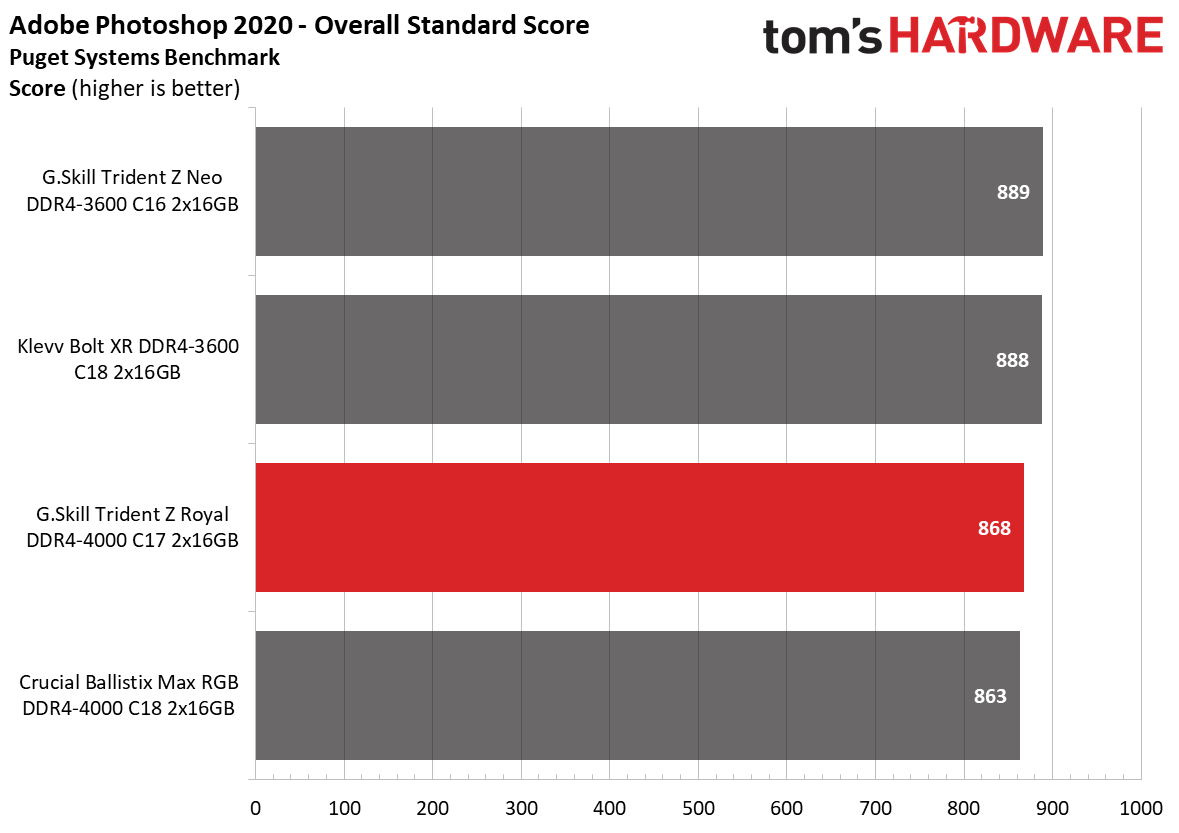












Unfortunately, the Trident Z Royal kit struggled on the AMD platform due to the nature of the Zen 2 microarchitecture. The inability to run the memory modules with the processor's Infinity Fabric clock (FCLK) and memory clock (MCLK) in a 1:1 ratio led to added latency. As a result, the Trident Z Royal trailed behind its DDR4-3600 rivals. Bear in mind, tuning the kit to a 1:1 fabric/memory ratio will yield better results.
Overclocking and Latency Tuning



We suspect that G.Skill binned this particular Trident Z Royal memory kit close to the borderline of its capacity. Even at 1.45V, we could only push it to DDR4-4133 with timings at 18-19-19-39.
Lowest Stable Timings
| Memory Kit | DDR4-3600 (1.45V) | DDR4-4000 (1.45V) | DDR4-4133 (1.45) | DDR4-4200 (1.45) |
|---|---|---|---|---|
| G.Skill Trident Z Neo DDR4-3600 C16 | 13-14-14-35 (2T) | N/A | N/A | 19-19-19-39 (2T) |
| Crucial Ballistix Max RGB DDR4-4000 C18 | N/A | 16-19-19-39 (2T) | N/A | 20-20-20-40 (2T) |
| G.Skill Trident Z Royal DDR4-4000 C17 | N/A | 15-16-16-36 (2T) | 18-19-19-39 (2T) | N/A |
| Klevv Bolt XR DDR4-3600 C18 | 16-19-19-39 (2T) | N/A | 18-22-22-42 (2T) | N/A |
On the contrary, we had better luck at optimizing the timings at the advertised DDR4-4000 frequency. A small 0.05V increase to the DRAM voltage was sufficient for us to reduce the XMP timings from 17-18-18-38 down to 15-16-16-36, which represents a major increase in performance.
Bottom Line
While aesthetics is a subjective matter, the Trident Z Royal DDR4-4000 C17's strong performance is unquestionable. A bit of fine-tuning can even take the memory kit to another level. While we can't speak for every single kit, our sample was stable with very tight timings with just a small bump in the DRAM voltage. A CAS Latency of 15 is no joke, considering that we are dealing with DDR4-4000 speeds here.
There's one important aspect to take into consideration with the Trident Z Royal DDR4-4000 C17, though. The memory kit evidently performs at its highest on the Intel platform. Zen 2 processors will have a very hard if not impossible time to run these memory modules in a 1:1 ratio between the FCLK and MCLK. Zen 2 chips typically support up to 1,800 MHz on the FCLK (DDR4-3600), with the really spectacular samples doing a bit higher. The latest Zen 3 parts, on the other hand, have a higher chance of exploiting the Trident Z Royal memory kit as hitting a 2,000 MHz FCLK (DDR4-4000) isn't a given, but it's more common. That's really the sweet spot for this kit on a Ryzen platform.
The Trident Z Royal DDR4-4000 C17 is a high-end memory kit, and it's priced like one. It retails for $289.99 and represents a good purchase if you want a fast memory kit that doesn't hinder your equally high-end system.

Zhiye Liu is a news editor, memory reviewer, and SSD tester at Tom’s Hardware. Although he loves everything that’s hardware, he has a soft spot for CPUs, GPUs, and RAM.
